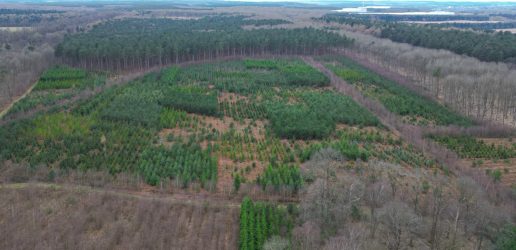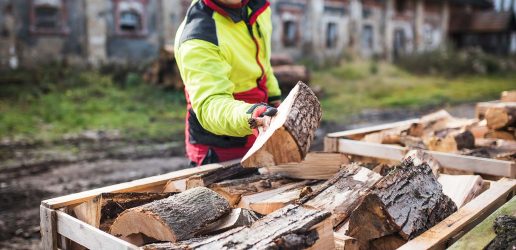Urban forests are critical in helping our towns and cities better cope with the effects of climate change and in providing a range of other benefits that make towns and cities safer, more pleasant and healthier places. It is not surprising therefore that there is great interest in research efforts directed at understanding the extent of existing and potential future urban tree canopy cover in England, Scotland and Wales, and its benefits.

In addition there is a growing interest in analyses of historic urban tree canopy cover as a way of helping us to know how (and potentially why) tree cover has changed and is changing. These analyses can also enable us to understand how we can better protect, manage and plan existing and future urban forests, for example by setting meaningful and realistic urban tree canopy cover targets. Studies of historic urban tree canopy cover are however still uncommon and concentrated to just a handful of countries.
Now, newly published research conducted by Forest Research explores changes in tree canopy cover since the 1940s for ten urban areas across Great Britain. The study examined aerial photography to reveal that in those ten areas there is a predominant trend of increasing tree cover from the 1940s through to 2018 but that over the past two decades there is more variation in whether tree cover is increasing or decreasing in those areas.
The impact of the World War II on tree cover was notable for a number of the cities studied, the lower canopy cover in the 1940s is very likely a consequence of the war, with the destruction of trees caused by bombing and because timber was required for the war effort.
Since then new factors have impacted urban forests in Great Britain. For example, other studies have noted that town planning, local as well as national socio-economic fortunes, and changing preferences for land cover types and how land is managed, as influential in determining the nature and extent of urban forests.
A particular challenge for the research was the shortage of useable aerial photographs between the 1940s and 2000, and future projects should seek to address this void. Geographic areas where photographic imagery exists are identified in the study to highlight the opportunity to expand the research across Great Britain.
Further research exploring historic trends in tree canopy cover in Great Britain would potentially enable a wider range of locations to be included in analyses as well as more time points within each area, thereby increasing the robustness of the trends identified. It could also allow for trends to be analysed over a longer period of time and for an investigation into the causes of changes in the level of canopy cover. To make this more feasible, new ways of calculating urban tree canopy cover from historic records, ideally approaches that are low cost or automated, are required.
The citation for the paper is: Doick, K.J.; Buckland, A.; Clarke, T.-K. Historic Urban Tree Canopy Cover of Great Britain. Forests 2020, 11, 1049.
Recent News
View All news
Seventeen coniferous tree species show early promise for future commercial timber production in the UK
Researchers have set up a network of nine large scale experiments across the UK to test the suitability of 17 tree species as potential alternatives for future commercial timber production.
Forest Research are looking for people involved in the harvesting, processing, transport, import, or trade of firewood in Scotland to complete an important survey.

New guide to help local authorities conduct a people survey on the social value of their treescapes
A new step-by-step guide to help local authorities, charities and civic societies carry out a people survey to understand social and cultural values related to trees in their area, is now available.

Seventeen coniferous tree species show early promise for future commercial timber production in the UK
Researchers have set up a network of nine large scale experiments across the UK to test the suitability of 17 tree species as potential alternatives for future commercial timber production.
Forest Research are looking for people involved in the harvesting, processing, transport, import, or trade of firewood in Scotland to complete an important survey.

New guide to help local authorities conduct a people survey on the social value of their treescapes
A new step-by-step guide to help local authorities, charities and civic societies carry out a people survey to understand social and cultural values related to trees in their area, is now available.

